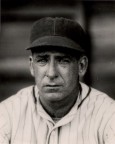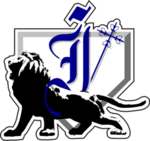BASEBALL IN CUBA
Baseball was introduced to Cuba in the 1860s by Cubans who studied in the United States and American sailors who ported in the country. The sport quickly spread across the island nation. Nemisio Guillo is credited with bringing a bat and baseball to Cuba in 1864 after being schooled in Mobile, Alabama. Two more Cubans were sent to Mobile, one being his brother Ernesto; the Guillo brothers and their contemporaries formed a Baseball team in 1868 – the Habana Baseball Club. The club won one major match – against the crew of an American schooner anchored at the Matanzas harbour.
Soon after this, the first Cuban War of Independence against its Spanish rulers spurred Spanish authorities in 1869 to ban playing the sport in Cuba. The reasons were because Cubans began to prefer baseball to viewing bullfights, which Cubans were expected dutifully attend as homage to their Spanish rulers in an informal cultural mandate. As such, baseball became symbolic of freedom and egalitarianism to the Cuban people. The ban also prompted Esteban Bellán to join the semipro Troy Haymakers – he would became the first Latin American player to play in a Major League in the United States. Bellán had started playing baseball for the Fordham Rose Hill Baseball Club, while attending Fordham University (1863 – 1868). After that he played for the Unions of Morrisania, a New York City team. Bellán played for the Haymakers until 1872; in 1871 it joined the National Association.
The first official match in Cuba took place in Pueblo Nuevo, Matanzas, at the Palmar del Junco on December 27, 1874. It was between Club Matanzas and Club Habana, the latter winning 51 to 9, in nine innings.
In late 1878 the Cuban League was organized, consisting of three teams, Almendares, Habana, and Mantanzas. The season consisted of four per team. The first game was played on December 29, 1878, with Habana defeating Almendares 21 to 20. Habana, under team captain Bellán, was undefeated in winning the first championship. The teams were amateurs (and all whites), but gradually professionalism took hold as teams bid away players from rivals.
The Spanish-American War brought increased opportunities to play against top teams from the United States. Also, the Cuban League admitted black players beginning in 1900. Soon many of the best players from the Negro Leagues were playing on integrated teams in Cuba. Beginning in 1908, Cuban teams scored a number of successes in competition against major league baseball teams, behind outstanding players such as pitcher José Méndez and outfielder Cristóbal Torriente (who were both enshrined in the Baseball Hall of Fame in 2006). By the 1920s, the level of play in the Cuban League was superb, as Negro League stars like Willie Wells and John Henry Lloyd spent their winters playing in Cuba.

In the Minor leagues the Havana Cubans, Florida International League from 1946-53, and the Cuban Sugar Kings, International League 1954-1960, brought Cuban baseball to the mainstream in the United States.
Baseball Today in Cuba
Baseball is considered to be the national sport of Cuba, and the sport which most ordinary Cubans are passionate about. Cuba has a long history of playing this sport on the island which goes back to the 19th century. The national baseball team of Cuba is easily the best in Latin America and often dominates regional competitions in this sport. The national baseball league in Cuba is also well developed providing plenty of opportunity for players of this sport to improve their skills at the highest national levels in Cuba. Every province in Cuba has its own baseball team while Havana has two and Isla de la Juventad has another. This means there are a total of 16 baseball teams in the national baseball league. The sports season begins in early autumn and culminates with national finals in May. The sporting league is similar to the basketball league in the US where the best of the Eastern conference meets the best of the Western conference in the finals which are played as the best of a series of seven.
Everything has seemingly been positive, however not everything went as planned. Since the professional system was abolished in-favor of amateur leagues, players were not paid as extravagantly as they once were. One report found that most baseball stars made less than $2,000 annually and that all players would receive sports leave pay at the same rate they would get from their off-season jobs as engineers, sports instructors, handymen, etc. The situation would get worse in the early 1990s after the collapse of the Soviet Union in 1991, which was Cuba’s main trading partner. This led many players to defect to the United States due to deteriorating economic conditions. Amidst such action, even Fidel Castro admitted himself that it’s hard to prevent the baseball stars from defecting. He would later proclaim, “if you have to compete against six million dollars versus three thousand Cuban pesos you cannot win.” Other problems included bribery scandals in which coaches and player alike would fix , which subsequently led to them being banned from baseball in Cuba. Following the collapse of the Soviet Union, there were also instances in Cuba where baseball would be canceled due to power outages and most fans chose to watch from their home since it seemed more feasible to do so. The situation was so bad that pitchers in-game, would often have to exchange cleats with the pitcher who would have to pitch in the next half-inning. As one can note, resources even as minute as baseball cleats were that scarce during this very time. The Cuban government to this very day is also somewhat hostile in relation to the players that did defect in the 1990s.
Sources: Wiki/CubanBaseb/InternetPhotos/TheCubanHistory.com



 Baseball in Cuba
Baseball in Cuba



